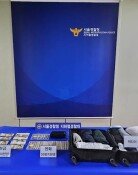KAIST Picks 91 Freshmen via Admissions Officer System
KAIST Picks 91 Freshmen via Admissions Officer System
Posted September. 01, 2009 07:48,
The leading science and technology university in the country, KAIST (Korea Advanced Institute of Science and Technology, introduced the admissions officer system this year.
Three out of every five students granted admission through recommendations by high school principals were rated as having the highest admissions grade of one in high school records. Most who earned admission had the highest grades, including in mathematics and physics.
The Dong-A Ilbo analyzed 150 students who earned admission through recommendations from their high school principals. Among 147 schools that disclosed student transcripts, only 12 said students who gained admission had a grade of three or below. Ninety-one students (61.9 percent) got the top grade and 44 students (22.9 percent) received the second.
Though the university did not ask students to submit their high school transcripts, most who got recommendations from their principals had stellar academic records.
A teacher at a high school that produced a successful candidate said, Though the university put the admissions officer system in place, high schools can recommend only qualified students. Students should not consider the admissions officer system as an expedient to enter a prestigious university without good school records.
KAIST introduced the system to prevent students from a limited number of schools from comprising a disproportionally large share of admitted applicants. The prolife of successful candidates turned out to be diversified according to the universitys plan.
Ninety-one high schools (60.7 percent) producing successful candidates this year had never sent a student to KAIST before.
By region, Gyeonggi Province sent 38 students to KAIST, followed by Seoul with 36. If Incheons six are also included, those from the Seoul metropolitan area accounted for 53.3 percent of those gaining admission.
KAIST asked principals of 651 high schools to recommend one student each in late May. Since then, the tech school has chosen 150 freshmen after a two-month screening procedure by admissions officers.
ruchi@donga.com kini@donga.com







